Where Gods Reside: Kolkata’s Sacred Places
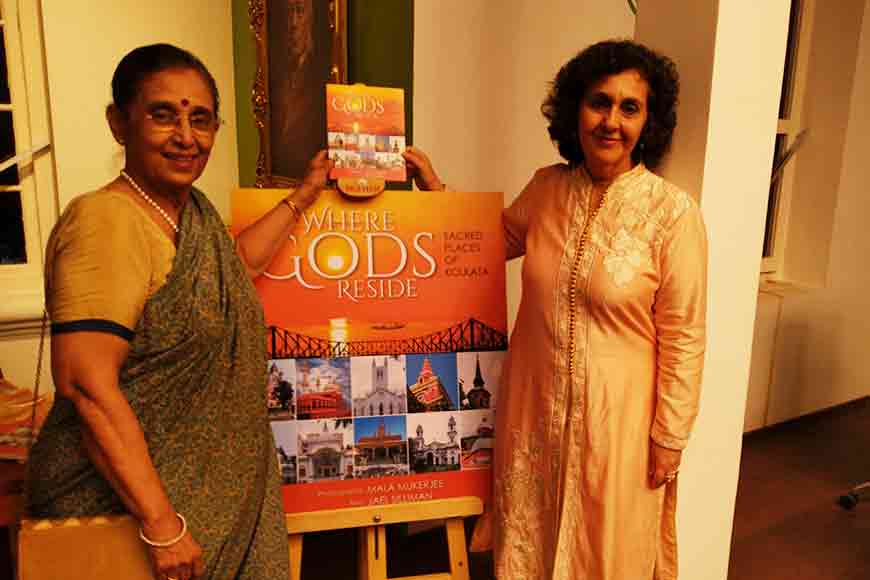
Well-known photographer Mala Mukerjee and world-renowned author and explorer Jael Silliman brings a rare view of Kolkata’s spiritual quotient with the launch of their book Where Gods Reside: Kolkata’s Sacred Places. GB had an exclusive rendezvous with Silliman who spoke about the book, her life as a Jew in Kolkata and how the city has always been the meeting place of different faiths and religions
• What led to the idea of a book on sacred places of Kolkata?
Kolkata has a rich spiritual heritage that manifests in the exquisite places of worship that have been built by the many communities who made Kolkata their home. Few cities in the world can boast of such a diverse religious heritage, dating back to the eighteenth century. Yet this aspect of the city’s history has not been widely acknowledged and needs to be showcased and celebrated. This cosmopolitan and global city was a transcendental center that nurtured many towering spiritual leaders of the eighteenth, nineteenth and twentieth who have had global appeal and impact.
• How did you and photographer Mala Mukerjee come together? Did you work together before, or is this your first project?
This is our first project together. Mala is a wonderful photographer and I knew of her work. She, in the meantime was familiar with my writing on Kolkata and approached me to work together on this book.
• How exciting was the work?
I have always been in awe of this city and its multicultural past of which I am a part. I have written about my community, the Baghdadi community in Calcutta, as well as about the city using fiction and non-fiction to engage diverse audiences. This book gave me the opportunity to work with Mala and bring this history to new audiences, combining compelling images with story-telling.
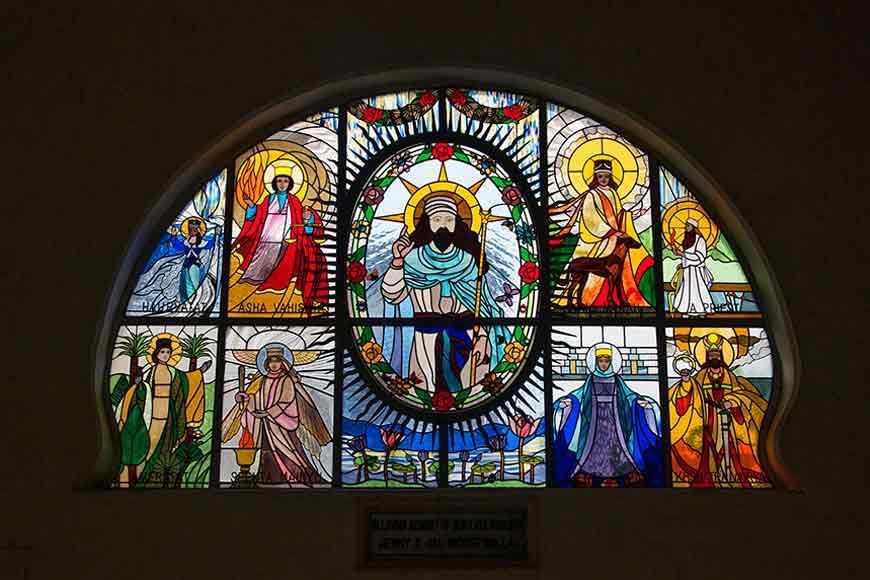 Stained glass pane
Stained glass pane
• What brings you back to this City of Joy over and over again, despite having lived and worked in various parts of the world?
My father’s family came to Kolkata in the late eighteenth century and over time many Jews from the Middle East followed, attracted by the great commercial opportunities this city afforded. Kolkata has and always will be my spiritual home. Though I lived and worked abroad for over thirty years, I always yearned to come back. I returned almost ten years ago and it has felt as though I never left. Over the last ten years, I have fallen even more in love with Kolkata and it has been my muse. I have written two novels, The Man With Many Hats and the Teak Almirah, set in the Calcutta Jewish community and developed a digital archive www.jewishcalcutta.in. Learning more about the city has compelled me to share my embrace with Kolkata with ever wider audiences.
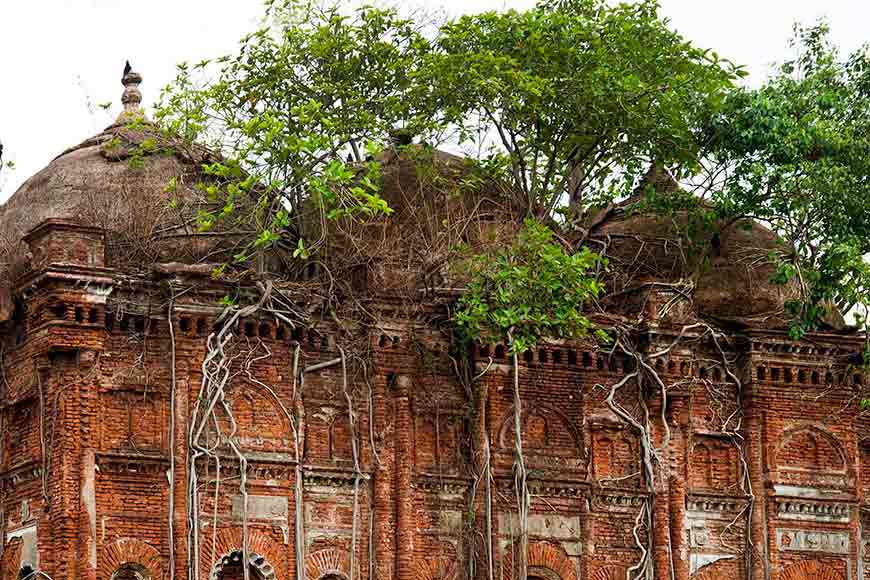 Bhonsri Shah' Masjid
Bhonsri Shah' Masjid
• Is Kolkata one of the unique cities of India, where all religions are practised without any hatred and inter-religious tensions?
That has been the ethos of Kolkata - a real acceptance, not a toleration of difference. It is special because since its formation this city had been a place, where any community flourished and where we respected one another. I hope it will stay that way. We cannot forget that there were the bloody tensions of Partition, and I sincerely hope that communal tensions in a wider climate of hate, will not be fanned. I do see increasing tensions between Hindus and Muslims even in Kolkata, and know that many politicians thrive on polarising and politicising difference. This book for me is timely: It reminds the city and the world that Kolkata’s diversity and cosmopolitanism is what has made it an exceptional city. Different religious communities can live side by side and thrive together. While Bengalis have nurtured their rich cultural and religious heritage, they enabled other communities to do the same. We have enjoyed and celebrated one another’s festivals and in doing so we have all been enriched.
• Which sacred places does the book cover?
The book has had to select a key religious building or two from the many communities who lived here. We feature Hindu, Muslim, Christian, Jewish, Parsee, Sikh, Chinese, Brahmo, Jain and Buddhist places of worship. Within each of these broader categories there are distinct religions so, for example, among the Christians we include the Armenian, Portuguese, Scots, Anglican, and Greek churches and cathedrals as well as the Mother House as Saint Theresa has been canonised. The beauty of Kolkata is we had so much to choose from! We also included a few street shrines to show how worship is an essential part of life here.
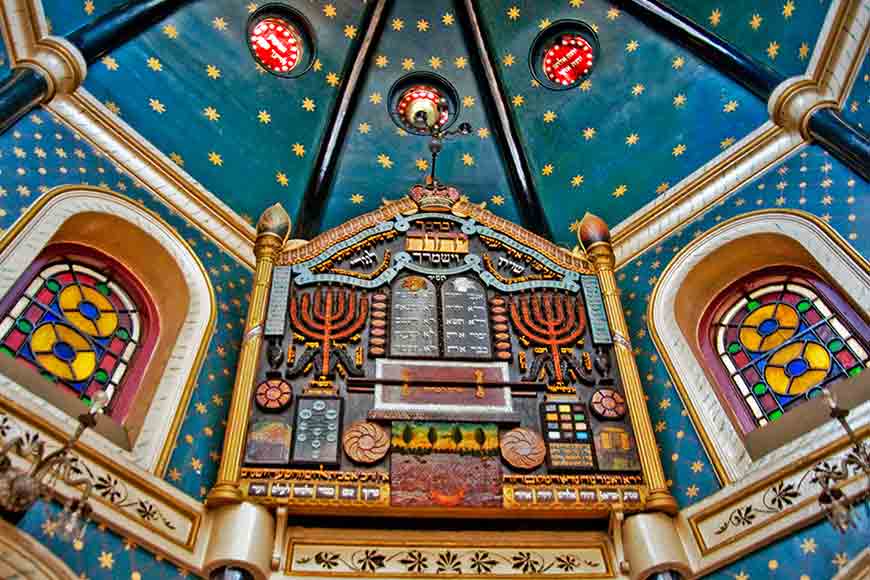 Mural at Magen David Synagogue
Mural at Magen David Synagogue
• Any difficulties or challenges you faced while clicking photographs or getting information about the places covered?
We found that there was little information available about most of the places both at the sites and on the net. So, we had to conduct interviews with members of various communities as we did not want to describe places but to tell a story about a community through their places of worship. Mala can say much more about difficulties she had in taking photos but given that many places are in such congested areas, it made her task so much more difficult and there were many places where she was not allowed to shoot inside the sanctuary such as the Kali temple, the Parsee agiari and the Parisnath Jain temple.
• How do you think this book will contribute to the history of Kolkata and cater to a generation who hardly know this city?
I think the book will be a rich resource for local people and those seeking to know Kolkata’s past. It is important to reframe the city that has too often been viewed through very narrow lenses. Kolkata needs to be much more widely known for its rich architectural heritage, it's unique material and spiritual culture and heritage. Not only do we have magnificent colonial architecture, a unique architecture fashioned by the Bengali gentry and middle-class, but an architectural legacy left by the diverse communities who lived and worked here and made it their home. This architectural legacy has been neglected and needs to be re-claimed and conserved for future generations. Learning about this legacy is a first step towards heritage conservation.
• You come from a Jewish family, does Kolkata still have a Jewish connect as before?
While there are only a handful of Jews left in the City we have three synagogues, two of them which are truly magnificent. Increasingly, Jews from many parts of the world are learning about India’s Jewish legacy. While before they would visit Mumbai and Cochin, increasingly Jewish tourists come to Kolkata to visit the synagogues here and through this way come to know and appreciate the city. www.jewishcalcutta.in has received considerable local, national and global attention through which Kolkata’s Jewish heritage is increasingly becoming known. It has generated research, popular articles and films that has drawn attention to the very special city that Kolkata is.
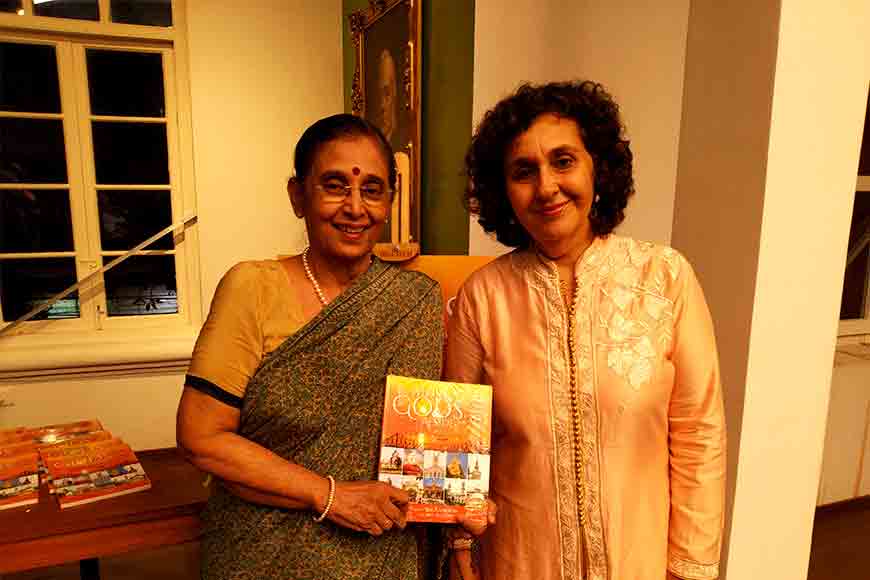 Mala Mukerjee and Jael Silliman at the book launch
Mala Mukerjee and Jael Silliman at the book launch
• Any future books on the anvil?
Mala and I do wish to work together again and are considering another book based on the city’s diverse heritage. This time we would like to do so, by featuring intimate ceremonies, those take place in homes and through unique religious events that are being less observed or are less known. We are in the very preliminary stages of developing a proposal for the book and need to ascertain a publisher that will do justice to Mala’s photography.
Pic Credit: MALA Mukerjee & DEBANJANA SAHA









